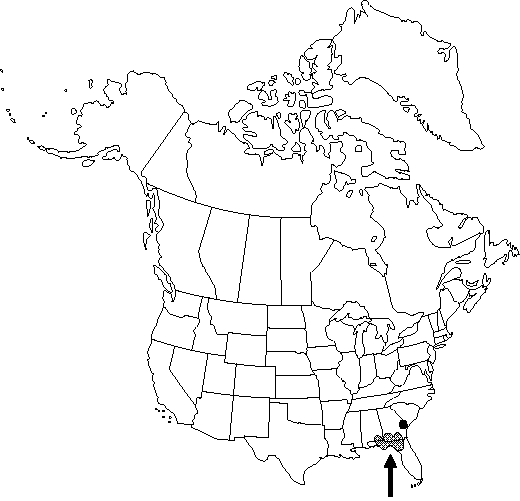Difference between revisions of "Nuphar orbiculata"
Publ. Field Columbian Mus., Bot. Ser. 8: 311. 1931 (as orbiculatum).
FNA>Volume Importer |
FNA>Volume Importer |
||
| Line 11: | Line 11: | ||
}} | }} | ||
|basionyms={{Treatment/ID/Synonym | |basionyms={{Treatment/ID/Synonym | ||
| − | |name= | + | |name=Nymphaea orbiculata |
|authority=Small | |authority=Small | ||
}} | }} | ||
|synonyms={{Treatment/ID/Synonym | |synonyms={{Treatment/ID/Synonym | ||
| − | |name= | + | |name=Nuphar lutea subsp. orbiculata |
|authority=(Small) E. O. Beal | |authority=(Small) E. O. Beal | ||
| − | }}{{Treatment/ID/Synonym | + | }} {{Treatment/ID/Synonym |
| − | |name= | + | |name=Nymphaea bombycina |
|authority=G. S. Miller & Standley | |authority=G. S. Miller & Standley | ||
}} | }} | ||
| Line 35: | Line 35: | ||
|elevation=0-100 m | |elevation=0-100 m | ||
|distribution=Ala.;Fla.;Ga. | |distribution=Ala.;Fla.;Ga. | ||
| − | |discussion=<p>Nuphar orbiculata is perhaps best treated as a subspecies. Plants intermediate between it and N. advena occur in southern Georgia and northern Florida.</p> | + | |discussion=<p><i>Nuphar orbiculata</i> is perhaps best treated as a subspecies. Plants intermediate between it and <i>N. advena</i> occur in southern Georgia and northern Florida.</p> |
|tables= | |tables= | ||
|references= | |references= | ||
| Line 48: | Line 48: | ||
|rank=species | |rank=species | ||
|parent rank=genus | |parent rank=genus | ||
| − | |synonyms= | + | |synonyms=Nuphar lutea subsp. orbiculata;Nymphaea bombycina |
| − | |basionyms= | + | |basionyms=Nymphaea orbiculata |
|family=Nymphaeaceae | |family=Nymphaeaceae | ||
|phenology=Flowering mid spring–early fall. | |phenology=Flowering mid spring–early fall. | ||
| Line 59: | Line 59: | ||
|publication year= | |publication year= | ||
|special status=Endemic | |special status=Endemic | ||
| − | |source xml=https://jpend@bitbucket.org/aafc-mbb/fna-data-curation.git/src/ | + | |source xml=https://jpend@bitbucket.org/aafc-mbb/fna-data-curation.git/src/8f726806613d60c220dc4493de13607dd3150896/coarse_grained_fna_xml/V3/V3_507.xml |
|genus=Nuphar | |genus=Nuphar | ||
|species=Nuphar orbiculata | |species=Nuphar orbiculata | ||
Revision as of 17:17, 18 September 2019
Rhizomes ca. 7-8 cm diam. Leaves mostly floating, occasionally submersed; petiole terete. Leaf blade abaxially and adaxially green, often suffused with purple, orbiculate or nearly so, 20-45 × 20-45 cm, 1-1.2 times as long as wide, sinus ca. 1/2 length of midrib, lobes approximate to overlapping; surfaces abaxially densely pubescent. Flowers 4-8 cm diam.; sepals 6, abaxially green to adaxially yellow, never red-tinged toward base; petals oblong, thick; anthers 5-6 mm, longer than filaments. Fruit greenish or yellowish, cylindric to nearly globose, 3.5-5 cm, smooth basally, finely ribbed toward apex, slightly constricted below stigmatic disk; stigmatic disk green, yellow, or sometimes reddened, ca. 30-35 mm diam., undulate; stigmatic rays 12-28, linear or lanceolate, terminating 1-3 mm from margin of disk. Seeds 4-6 mm.
Phenology: Flowering mid spring–early fall.
Habitat: Acidic ponds
Elevation: 0-100 m
Distribution

Ala., Fla., Ga.
Discussion
Nuphar orbiculata is perhaps best treated as a subspecies. Plants intermediate between it and N. advena occur in southern Georgia and northern Florida.
Selected References
None.